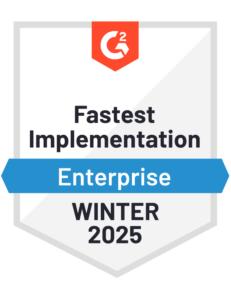3 Ways Finance Teams Impact Their Healthcare Organizations
Blog post
Share
Nurses, doctors, and those in the healthcare industry have continually demonstrated their importance to society, especially during the 2020 pandemic. But healthcare workers are only as effective as the organization in which they work, and many financial processes in healthcare organizations significantly impact the care they are able to give. To provide the most effective and efficient level of care, the office of finance must ensure their financial processes are as proficient as the caregivers they sustain. Proper healthcare financial management builds revenue to support hiring in order to handle patient increases and keeps the board informed of the organization’s financial stability.
Finance Processes Directly Affect Quality of Care
The United States’ population is aging at a historic rate as over seventy million Baby Boomers enter their 70s. As a direct result, healthcare facilities need to be prepared for the steady increase in patients and all their accompanying financial documentation. As more patients seek treatments, the amount of paperwork will continue to rise coupled with the number of participants in the care cycle (e.g., private or public insurers, doctors, hospitals). Administrative staff may not increase as the number of patients do, meaning that the staff will have to handle any influx of patients with fewer resources than they did previously. Finance teams in the healthcare industry will be able to better scale care by transforming manual processes to digital processes in the Cloud.
Additionally, older patients usually require greater amounts of highly specialized care, and they may receive that care from multiple facilities within a single healthcare system. The office of finance then has to track those patients, the services rendered and the payments they owe. If your organization’s finance team leans heavily on manual processes, then the time it takes to track down supporting documentation is a very arduous process.
The office of finance in healthcare organizations also impacts the quality and effectiveness of the service each patient receives. Incorrectly matching bills to and from the patient and their insurance has the possibility of slowing the completion of patients’ healthcare service experience while creating additional stress. Consequently, this inhibits the patient’s and staff’s ability to focus on needed health services. Moving to the Cloud keeps documentation easily accessible and updated as care continues while minimizing complications, so healthcare companies are able to give their patients the best care.
New Regulations Demand Updated Finance Processes
An increase in patients and their demand for care will be paired with continuing pressure from the Affordable Care Act (ACA). One of the requirements of the ACA is the conversion of handwritten files to electronic medical records. While an inconvenience, this mandate equips providers to transform their processes for efficiency. Healthcare is a complicated system of payees and payors, with many of these participants spread across the globe. In order for healthcare workers to best serve patients, the financial processes of the organization must be centralized and function effectively.
Automating processes, such as reconciliations, means faster patient and billing exception handling. When the patient’s data is in the cloud, any prescriptions or specialized care costs can be easily viewed in a secure, connected system. Updates to the ACA also altered many billing procedures, and an automated reconciliation system would cut down on confusion and lost revenue by keeping all information and transactions in one integrated system. Capturing that lost revenue could mean the difference between saving a life or turning a patient away from the door as healthcare budgets shrink and patient numbers rise.
More Payment Options Require More Efficient Reconciliation Methods
With the rise of high-deductible health plans, the responsibility of meeting healthcare payments has shifted toward patients. Patients now account for 30% of billing revenue and are increasingly seeking more convenient payment options, such as credit cards.
Under manual methods, supporting these new payment options requires extra work for finance teams in healthcare, especially with higher volumes of credit card transactions. Financial automation speeds up transaction matching and account reconciliation processes. Just like insurance companies, patients need a quick payment turnaround and understandable bills, so automating financial processes will not only benefit healthcare organizations, but the patients they serve.
Conclusion
As a crucial crux of society, healthcare organizations continually face new challenges, whether those are internal problems, such as inadequate financial processes or external complications, such as a spike in demand or new laws. Healthcare’s constantly changing environment requires a financial tool that can meet and grow with the organization’s needs so workers can best serve their patients and communities. Financial automation is the best tool for healthcare financial management, over more manual tools and processes that are unnecessarily complicated and waste time.
Learn more about how automating the financial close in healthcare facilities can improve your office of finance.
Written by: Ashton Mathai







